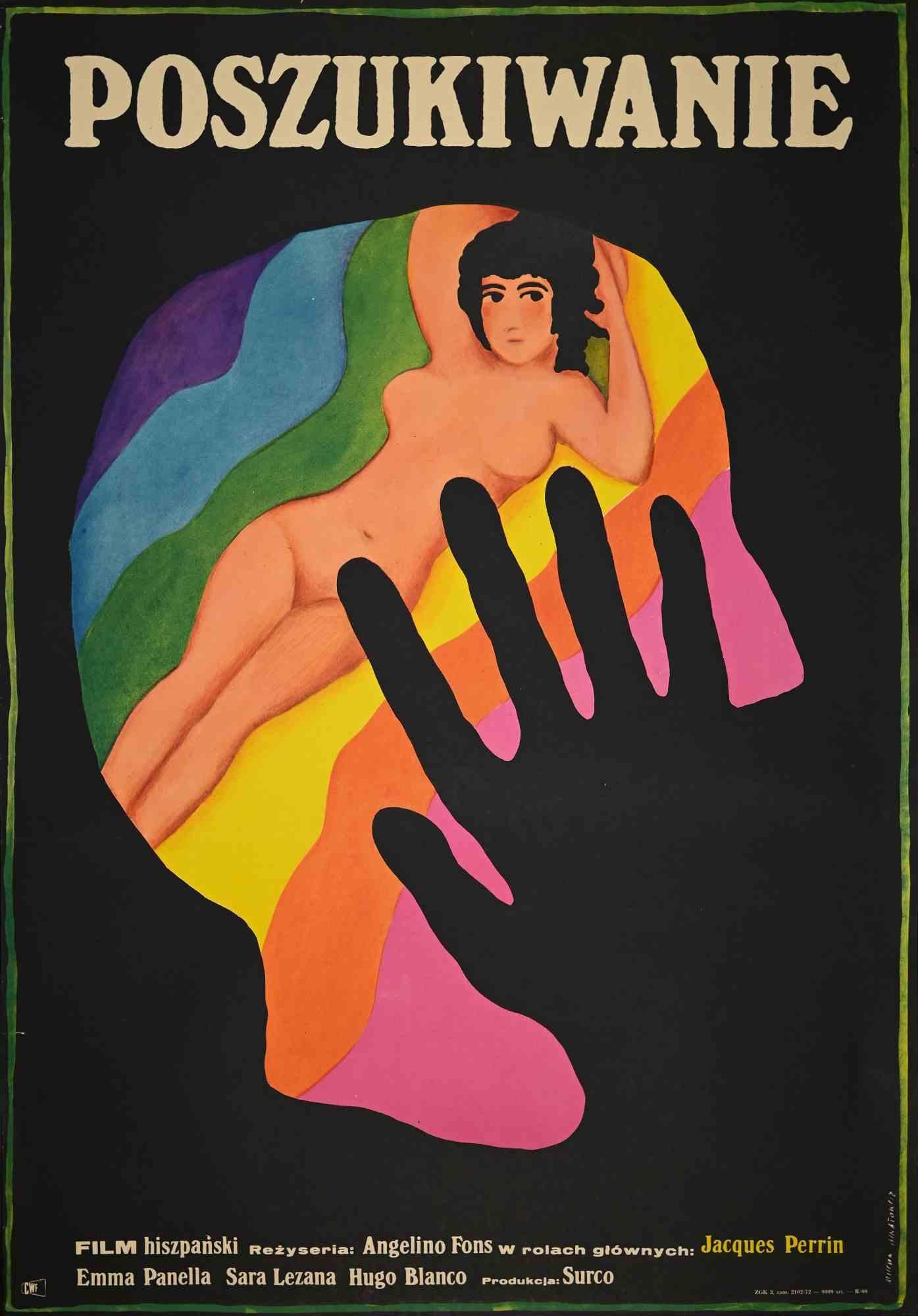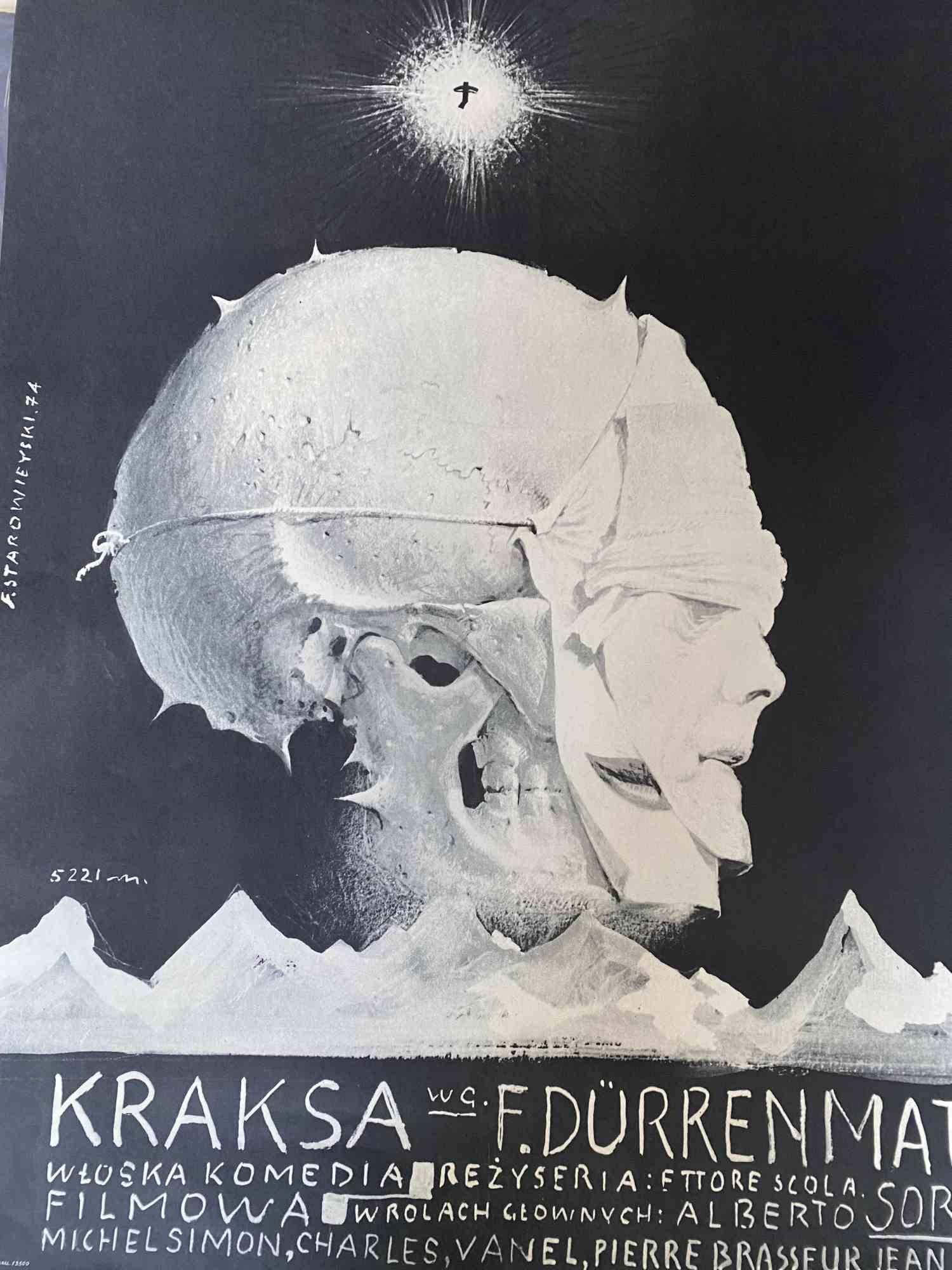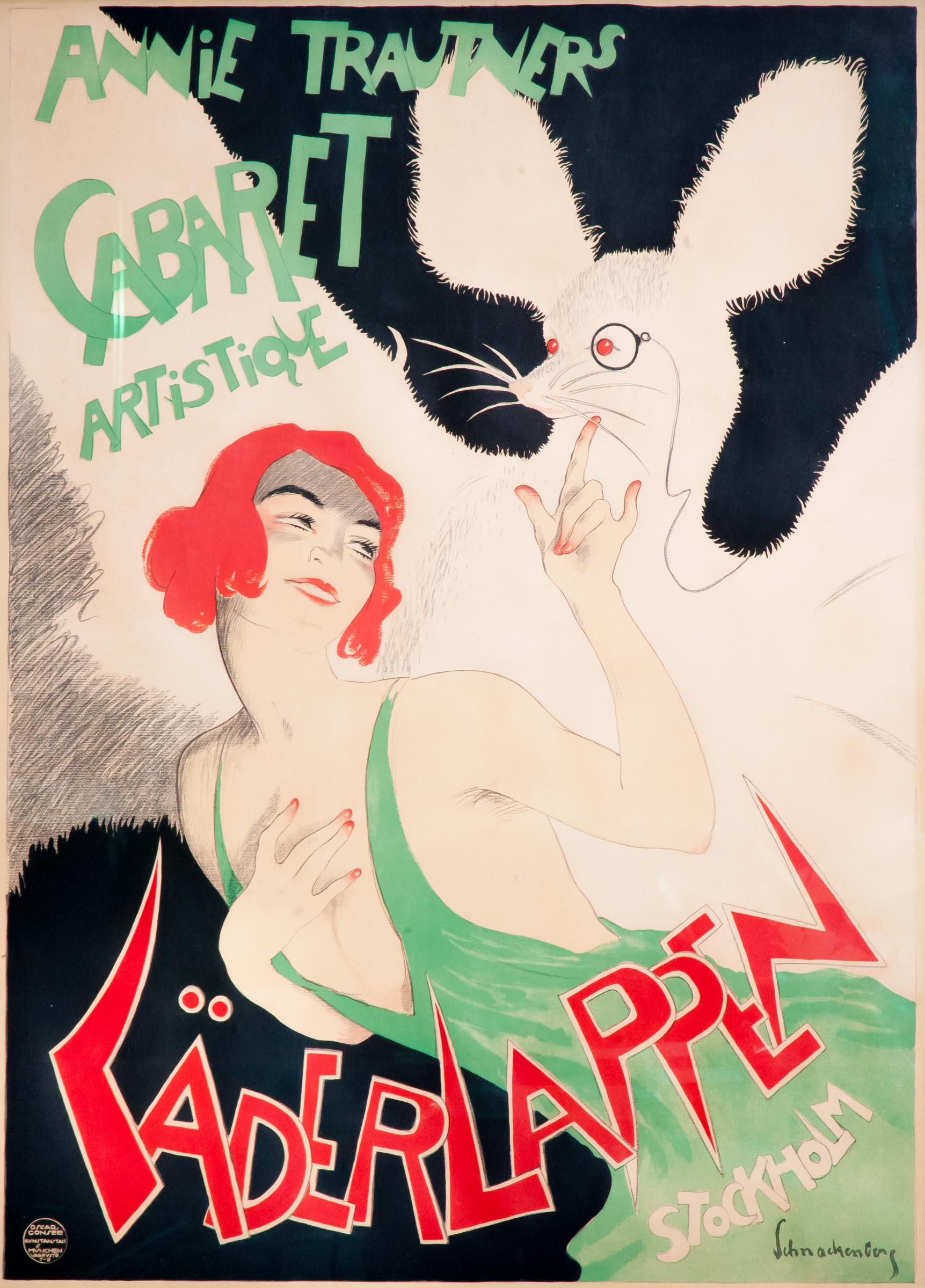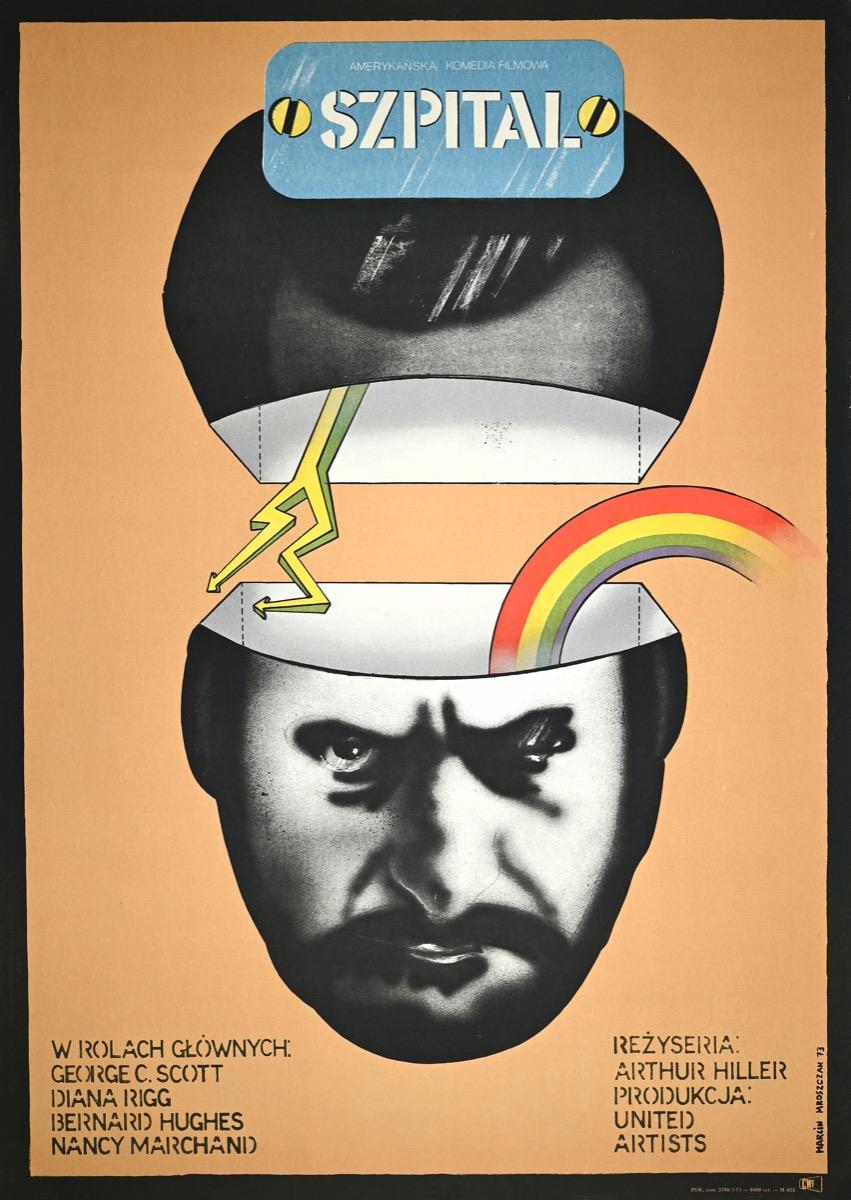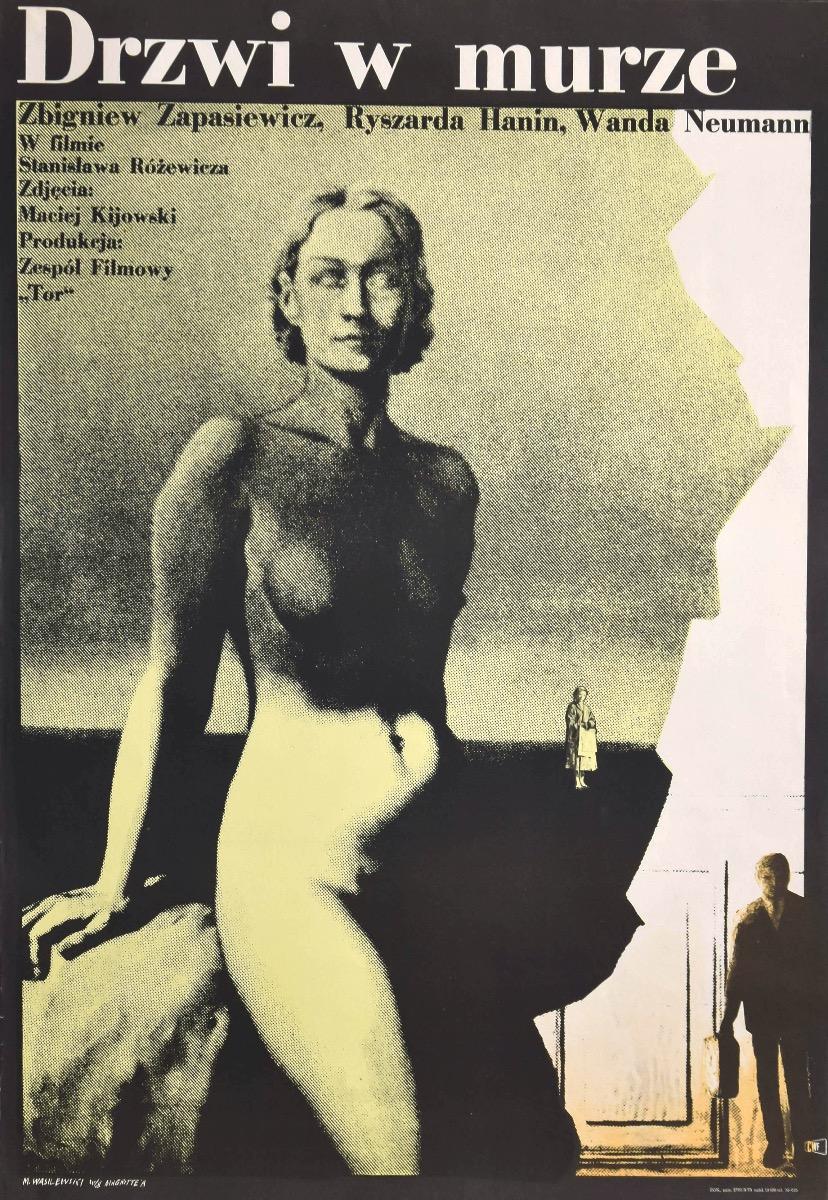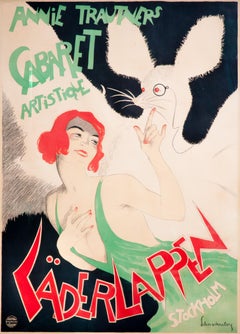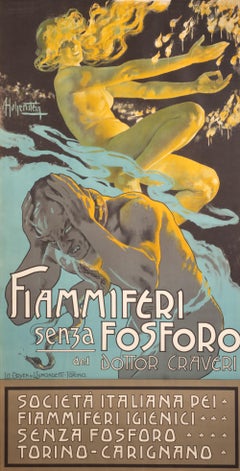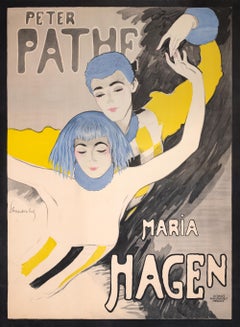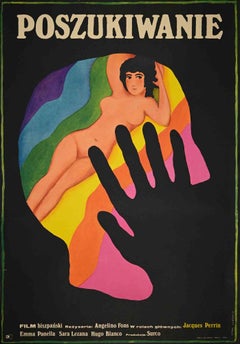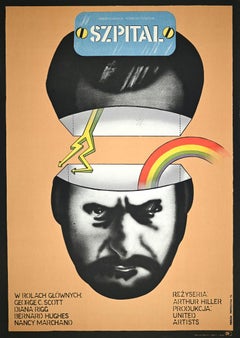Items Similar to "Opium" Lithograph Poster by Theo Matejko
Want more images or videos?
Request additional images or videos from the seller
1 of 6
Theo Matejko"Opium" Lithograph Poster by Theo Matejko1919
1919
$29,500
£22,928.64
€25,961.47
CA$42,149.86
A$45,891.28
CHF 24,028.07
MX$550,847.55
NOK 303,248.52
SEK 284,347.04
DKK 193,870.92
About the Item
Frame is handmade by artist Gail Potocki.
WEAG-Matejko, Printer, Vienna
"In 1919, artist Theo Matejko created this lithograph for Robert Reinert's silent film Opium (starring Conrad Veidt, Werner Krauss, Friedrich Kuhne, Sybill Morel, and Eduard von Winterstein). The image is a masterpiece of German Weimar decadence!
This original film poster measures an astonishing 4 x 6 feet, and while hundreds may have been printed, they were pasted onto walls to advertise the film; today, the single copy known to have survived is housed in the Galerie Fledermaus archive.
The subtle, dream-like hallucinations of opium achieved infamy as an intoxicant well before Robert Reinert's silent film - Homer and Shakespeare romanticized the drug in verse; Keats, De Quincey, Freud, and Coleridge were addicts, and Mary Shelley wrote Frankenstein under its influence.
To combat civil unrest in war-decimated Germany at the end of World War I, the Council of Peoples Commissioners abolished the military censorship instigated at the outset of the Great War. Film studios took advantage of this new freedom, and there was a sudden increase in "Aufklarungsfilme" (enlightenment films) pretending to be concerned with social welfare.
The film Opium sold out for three solid weeks, proving that the public's ravenous pursuit of titillation and stimulation was not unlike the starved condition of an emaciated opium addict. In the film, addiction, murder, infidelity, and sexual abandon plague a European doctor's quest to use the medical benefits of opium without all the messy side effects.
Unsurprisingly, after a year of horrific shock films and thinly veiled pornography played to thoroughly attentive audiences throughout all the major theaters in Germany, the government stepped back in to firmly reinstate censorship in May of 1920." ~ Thomas Negovin
- Creator:Theo Matejko (1893 - 1946, Austrian)
- Creation Year:1919
- Dimensions:Height: 83 in (210.82 cm)Width: 58 in (147.32 cm)
- Medium:
- Movement & Style:
- Period:
- Condition:
- Gallery Location:Palm Beach, FL
- Reference Number:1stDibs: LU467314842022
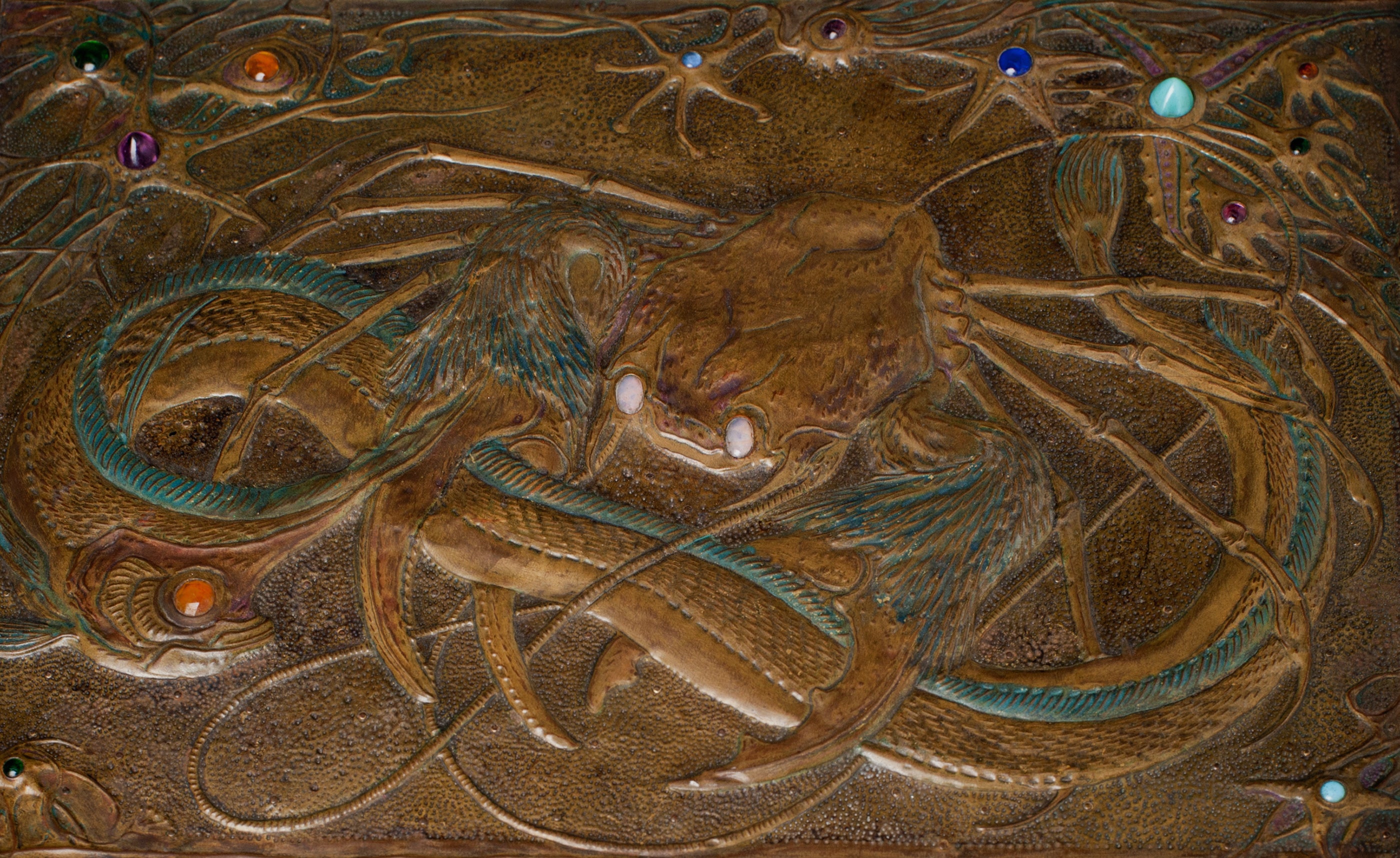
About the Seller
5.0
Vetted Professional Seller
Every seller passes strict standards for authenticity and reliability
Established in 2013
1stDibs seller since 2016
100 sales on 1stDibs
Typical response time: 2 hours
- ShippingRetrieving quote...Shipping from: Palm Beach, FL
- Return Policy
More From This Seller
View All"Laderlappen" Original Lithograph Poster by Walter Schnackenberg
By Walter Schnackenberg
Located in Palm Beach, FL
Printed by Oscar Consee, Munich, 1922
Not much is known about this Stockholm-based cabaret act. Translating literally as Bat Man, we see a young dancer tease an oversized bat wearing a monocle -- a truly bizarre but beautiful design. (text by Jack Rennert)
Walter Schnackenberg’s style changed several times during his long and successful career. Having studied in Munich, the artist traveled often to Paris where he fell under the spell of the Henri de Toulouse-Lautrec’s colorful and sensuous posters depicting theatrical and decadent subjects. Schnackenberg became a regular contributor of similar compositions to the German magazines Jugend and Simplicissimus before devoting himself to the design of stage scenery...
Category
1920s Art Nouveau Figurative Prints
Materials
Lithograph
Art Nouveau "Fiammiferi Senza Fosforo" original poster by Aldolfo Hohenstein
By Adolfo Hohenstein
Located in Palm Beach, FL
Note: We highly recommend shipping through 1stDibs for its cost effectiveness, full insurance coverage, and reliable handling. While standard parcel services are an option, the defau...
Category
Early 1900s Art Nouveau Figurative Prints
Materials
Lithograph
"Salsomaggiore" Original Lithograph poster by Galileo Chini
Located in Palm Beach, FL
Stone lithograph in custom frame by artist Gail Potocki.
Artist insignia in lower right corner.
Category
1920s Art Nouveau Figurative Prints
Materials
Lithograph
"Peter Pathe Marie Hagan" Original Lithograph Poster by Walter Schnackenberg
By Walter Schnackenberg
Located in Palm Beach, FL
Original vintage lithograph poster with depiction of Munich-based balletic duo Peter Pathe and Maria Hagen. Design by Walter Schnackenberg (German, 1880-1961). A very scarce example....
Category
1910s Art Nouveau Figurative Prints
Materials
Lithograph
Peter Pathe - Original Lithograph Poster
By Walter Schnackenberg
Located in Palm Beach, FL
PETER PATHE, poster lithograph, Schnackenberg School, 1919, the image features the headline performer, Peter Pathe, in drag wearing a form-fitting button-down jacket, high-waisted shorts buttoning down the front, Mary Jane dance shoes and calf-length white socks; Pathe is depicted in motion with raised jazz hands which frame his bushy-haired heavily made-up face and body curving in dynamic lateral movement with raised front leg turned out; with printed text at the bottom: “PETER PATHE/und/Fritz Wolf-Killanyi * Renate Ferena/Tia Majja * Else Zimmermann tanzenmit grossem/Orchester (Leitung: Rob. Tants) Donnerstag, 18 Nov., amends 71/2 Uhr im Konzertsaal Hotel “Vier Jahreszeiten”/Karten zu Mk. 20. - bis Mk. 3.- bei Alfr. Schmid Nachf., Residenzstr. 7 und Otto Halbreiter, Promendeplatz 16.”; printed text at mid-right: “M. Pathe/19”; marked with the printer’s stamp in the lower right: “Oscar Consee/Kunstanstalt/Munchen/Valley Str./7-9”; the poster is secured by matting and framed with a plexiglass cover, Boston...
Category
1910s Art Nouveau Figurative Prints
Materials
Lithograph
Kostume, Plakate, und Dekorationen, "Anne Lemans"
By Walter Schnackenberg
Located in Palm Beach, FL
Walter Schnackenberg’s style changed several times during his long and successful career. Having studied in Munich, the artist traveled often to Paris where he fell under the spell of the Henri de Toulouse-Lautrec’s colorful and sensuous posters depicting theatrical and decadent subjects. Schnackenberg became a regular contributor of similar compositions to the German magazines Jugend and Simplicissimus before devoting himself to the design of stage scenery and costumes. In the artist’s theatrical work, his mastery of form, ornamentation, and Orientalism became increasingly evident. He excelled at combining fluid Art Nouveau outlines, with spiky Expressionist passages, and the postures and patterns of the mysterious East.
In his later years, Schnackenberg explored the unconscious, using surreal subject matter and paler colors that plainly portrayed dreams and visions, some imbued with political connotations. His drawings, illustrations, folio prints, and posters are highly sought today for their exceedingly imaginative qualities, enchanting subject matter, and arresting use of color.
SCHNACKENBERG: KOSTUME, PLAKATE UND DEKORATIONEN, a cardboard bound art book consisting of 43 prints of work by Walter Schnackenberg, 30 of which are color lithographs that are signed and some are titled and dated in the plate, as well as black and white prints and photographs with accompanying text by Oskar Bie; lithographs printed at Kunstanstalt Oskar Consee in Munich, other images printed by Gesellschaft Pick & Co. in Munich, the text and cover with color images by Schnackenberg front and verso printed by R. Oldenbourg in Munich; published by Musarion Verlag, Munich, 1920.
The majority of Walter Schnackenberg’s artistic output was destroyed by bomb attacks in Munich in 1944. The highly publicized 2013 auction in New York of the recovered pre-war poster collection once belonging to German poster aficionado, Hans Sachs has reintroduced the world to Walter Schnackenberg’s graphic genius and priceless ephemeral art from a lost era. Besides the museum world, designer Karl Lagerfeld is one of the most prodigious collectors of Schnackenberg. Flipping through the pages of Kostume, Plakate und Dekorationen, it becomes quite clear that Schnackenberg’s collection is ground zero at the crossroads of early modern fashion where the cult of celebrity meets up with dance, music, theater and cabaret, film and the graphic medium. Berlin and Munich under Germany’s Weimar Republic in the first quarter of the 20th century produced just the atmosphere to feed this burgeoning industry. Rising inflation sparked a recklessness to live large for the moment and heightened a desire for escapism. An influx of Indian and East Asian dancers and musicians added to the artsy bohemian cultural mix. A new decadence and tolerance resulted. Film boldly featured provocative subject matter. Cabarets became popular venues giving rise to the demi-monde in which people from all social stations mixed more freely in a thriving underground economy and culture where there was a blurring of boundaries and of social codes. Noted art historian and cultural doyen, Oskar Bie astutely observes in his introduction to Schnackenberg’s publication that what unites the images is fantasy and advertisement. Schnackenberg uses the eye as an instrument to brilliantly construct and convey this double message. His personages never directly confront the viewer. Their eyes gaze off in the distance like those of the screenplayer and film star Hedamaria Scholz in Schnackenberg’s “Die Rodelhexe” movie poster. Their eyes follow the path of a dance composition or become a transfixed and ogling male gaze such as the iconic 1911 Odeon Casino...
Category
1910s Expressionist Figurative Prints
Materials
Lithograph
You May Also Like
Poszukiwaniem - Vintage Poster - 1972
Located in Roma, IT
Poszukiwanie - Vintage Poster is a vintage poster realized by Unknown Artist, in 1972.
Mixed colored offset print.
The artwork represented a poster ...
Category
1970s Modern Figurative Prints
Materials
Offset
Madonna (Dreaming Woman) - Original Vintage Exhibition Poster (Berggruen)
By Edvard Munch
Located in Paris, IDF
Edvard MUNCH (1863 - 1944)
Madonna, 1983
Original vintage poster (high quality four-color process)
On thick paper 79 x 50 cm
Created for the exhibition "Munch Engravings and Lithogr...
Category
1960s Expressionist Portrait Prints
Materials
Offset
Italian Cinema - Vintage Poster after Franciszek Strawieyski - 1974
Located in Roma, IT
Italian Cinema - Vintage Poster is a offset print of polish poster realized by Franciszek Strawieyski, in 1974.
Black and White offset print.
Signed n...
Category
1970s Contemporary Portrait Prints
Materials
Offset
Szipital- Vintage Poster by Marcin Mroszciak - 1973
Located in Roma, IT
Szpital is a vintage offset print on paper realized by Marcin Mroszciak in 1973.
Good condition and aged.
Print: Marcin Mroszciak
Category
1970s Contemporary Figurative Prints
Materials
Paper, Offset
Drzwi w Murze- Vintage Offset Poster - 1976
Located in Roma, IT
Drzwi w Murze is a vintage offset poster on paper realized by M. Wasilewski in 1974.
Good condition and aged.
Print: M. Wasilewski
Category
1970s Contemporary Figurative Prints
Materials
Paper, Offset
Dni Zdrady - Vintage Poster - 1973
Located in Roma, IT
Dni Zdrady vintage poster is an original offset print on paper realized by Unknown Czechoslovakian Artist of the 20th Century.
Original colored offset.
Good condition and aged.
Category
1970s Contemporary Figurative Prints
Materials
Offset
More Ways To Browse
Opium Antique
Mary Shelley Frankenstein
Retro Library Posters
Reynolds Etching
Richard Lane
Robert Conover
Robert Von Neumann
Ruth Gleaning
Salvador Dali Bullfight
Salvador Dali Color Etching
Salvador Dali Flower
Salvador Dali Marilyn
Salvador Dali Snail
Salvador Dali Tarot
Saturday Evening Post Prints
Sheldon C Schoneberg
Shell Etching
Signed Screen Print Patrick Nagel
